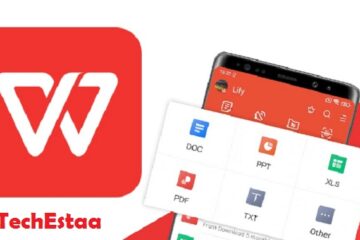IT services are the activities that organizations carry out to make their IT systems work properly. These activities include the design, operating, building, controlling, delivering and managing information technology services.
Active IT support
Active IT Support is a type of support that is offered to people who need assistance with computer issues. It may involve live help through phone calls, a remote session, or an on-site visit. The purpose of the study was to identify factors associated with Active Support and its quality.
This type of support focuses on the needs of an individual customer and responds in real time. For example, when a user is experiencing a problem with a computer or software, a technician will work to resolve the issue by diagnosing the problem, recommending a solution, and assisting the customer to use the solution.
Researchers have used statistical analysis to measure the quality of Active Support across a wide range of services. They have identified two models that can be applied to these studies: Model 1 is a null model that contains no predictor variables and Model 2 is an individual model that includes predictor variables.
These models calculate individual staff scores based on perceptions of practice leadership, attitudes toward people with intellectual disabilities, and a measure of senior management. In addition, these models include several service variables, such as the number of service users, the length of time since Active Support was first adopted, and the degree of heterogeneity among service users.
Results indicate that the higher the level of adaptive behavior, the better the quality of Active Support. However, the study found that there was only a modest relationship between higher levels of adaptive behavior and better Active Support.
Moreover, researchers found that there were negative associations between Active Support and seven or more service users. While this could be a cause for concern, it appears that organizations may also be less capable of providing high-quality support to people who are less adaptive.
Monitoring
Monitoring IT services and systems is a standard practice at Affinity IT. It helps our team to ensure that we have the right tools to complete our tasks, and that colleagues have the resources they need to do their work. This can be done through monitoring software, agents, or a combination of the two.
Monitoring is a great way to identify problems before they become catastrophic. It can also help to reduce downtime, increase productivity, and maintain great customer service.
IT services monitor computer and network performance. They can also identify if technology needs to be updated. As part of this process, they can also track who is accessing business information.
Using advanced monitoring solutions allows businesses to have a single view of their metrics. This provides them with a better understanding of their IT estate and allows them to make more strategic decisions.
Monitoring is essential in the digital era because organizations cannot afford to run their applications inefficiently. In fact, an inefficient use of digital resources can affect an organization’s reputation, brand name, and productivity.
An effective monitoring tool measures the performance of your application and alerts users of any current issues. This can save you from expensive downtime.
IT monitoring can also provide you with trend analysis to determine system uptime. When used correctly, this can help you make proactive recommendations to improve your infrastructure.
Another important measure of IT performance is the user experience. The number of pages viewed and load time of web pages are indicators of how well your applications are performing. By knowing these things, you can optimize your marketing and customer service strategies.
Synthetic monitoring is a good way to do this. It uses artificial simulations of user transactions to get a baseline of performance. This lets IT managers know about potential issues before they become a problem.
Troubleshooting
There are a number of ways to troubleshoot IT services. Some of these methods are more complicated and more complex than others. However, they all have their own unique advantages. These include providing an efficient way to resolve issues and ensuring the best possible customer experience. Taking the time to solve your customer’s problems will help you improve loyalty and retention.
A troubleshooting methodology has three pillars: an information-gathering phase, a testing phase, and a resolution phase. It isn’t uncommon for a customer support representative to make use of a slew of tools and tricks to determine what is actually causing their issue. This can often involve a variety of methods including remote system control.
As with any IT solution, it is important to provide transparency to your clients. The best solutions are ones that allow you to track and resolve any problems as they arise. By making this process as transparent as possible, your team can identify potential security threats.
If you are unsure which steps to take, consider outsourcing your IT support to a company with a solid track record. Such organizations offer extensive service reporting that generates detailed documentation of all delivered services. Having an expert on your team will give you a much better chance of spotting problems before they turn into costly catastrophes.
Lastly, the most important part of an effective IT support system is the team’s ability to implement a proper troubleshooting methodology. Identifying a problem and preventing it from occurring is the primary goal of any successful service, but troubleshooting can be a complex task. An IT support system that is easy to use and accessible will make this much easier for you and your clients.
Software development
Software development services are a growing trend. These services help companies develop products and solutions. This helps them stay competitive in the market. They also help businesses achieve their goals.
Software development services are offered by companies that specialize in IT consulting. Their services include IT consulting, web design & development, product road mapping, and support & maintenance.
Today’s digital age has led to a plethora of software development services. It’s important for companies to evaluate their options and find the right provider. Whether it’s a custom software development service or an offshore development model, it’s essential to find a reliable and experienced team.
Software development services are an excellent solution for companies that want to focus on serving customers. These services are more attractive in today’s world of remote work.
Software development services work with business stakeholders to design a custom application that meets their goals. The process can be complex and long. A good software development provider can streamline the process and keep it on track.
Software development services are also more affordable than developing a solution in-house. In addition, these services can help businesses overcome the obstacles that come with IT projects.
Businesses that need custom software development services should look for a provider with a proven track record, experience in the subject matter, and a portfolio of projects. It’s a good idea to check with references, and ensure that work is done onshore, rather than offshore.
Developing software for a robotic vacuum requires that the software be easy to use, and it should also handle errors well. This means that it needs a powerful processor, and it should be able to be upgraded without affecting the performance.
Managed IT services
Many organizations outsource a portion of their technology management to a managed service provider (MSP). It is a cost-effective way to manage IT, and it helps businesses increase productivity.
Outsourcing tasks allows the internal team to focus on revenue-generating work. It can also give the team more time to do strategic thinking. The benefit is that the organization can keep up with trends and technologies.
An MSP can provide a comprehensive range of services, from design and implementation to network monitoring and maintenance. They can even offer security solutions. By relying on a reliable partner, businesses can rest assured that their technology is in good hands.
Most MSPs offer a hybrid model, allowing their clients to use both onshore and offshore resources. This lowers the average effective rate and expands their resource pool.
Managed IT services can include monitoring, security, backup, and user education. These services can be billed on a monthly or quarterly basis. In addition, most providers offer round-the-clock helpdesk support. A managed services provider can also implement a technology roadmap to help you grow your business.
Managed IT services can be invaluable for small to medium-sized businesses. They can eliminate the need for hiring an in-house IT department, which can save on both labor and administrative costs. Also, they are designed to keep your systems running at optimal performance.
Conclusion
A managed services provider can help your organization stay ahead of the competition. This means having the latest tools and technology to ensure that your business stays at the forefront of your industry. However, it is important to choose the right service for your company. Whether you are looking for an affordable solution or an all-inclusive plan, a qualified managed service provider can help your business make the most of its investment.


